Wrong or no access token.

02
TRUST CHAIR
CASE STUDY
Tillid’s core concept: Trust in Myself, is Trust in Others, is an affirmation that life is richer because of the
connections we make. The more we trust: the stronger we become. The open frame is woven with a network of flag-halyard; the angled seat pulls the sitter back into a reclined, relaxed position, while the sloping back-edge hints at the corporeal symbolism of the maple frame. The subtle detail emphasizes an underlying vulnerability—tension between fiber and wood.
Tillid’s core concept: Trust in Myself, is Trust
in Others, is an affirmation that life is richer because of the connections we make. The more we trust: the stronger we become. The open frame is woven with a network of flag-halyard; the angled seat pulls the sitter back into a reclined, relaxed position, while the sloping back-edge hints at the corporeal symbolism of the maple frame. The subtle detail emphasizes an underlying vulnerability—tension between fiber and wood.
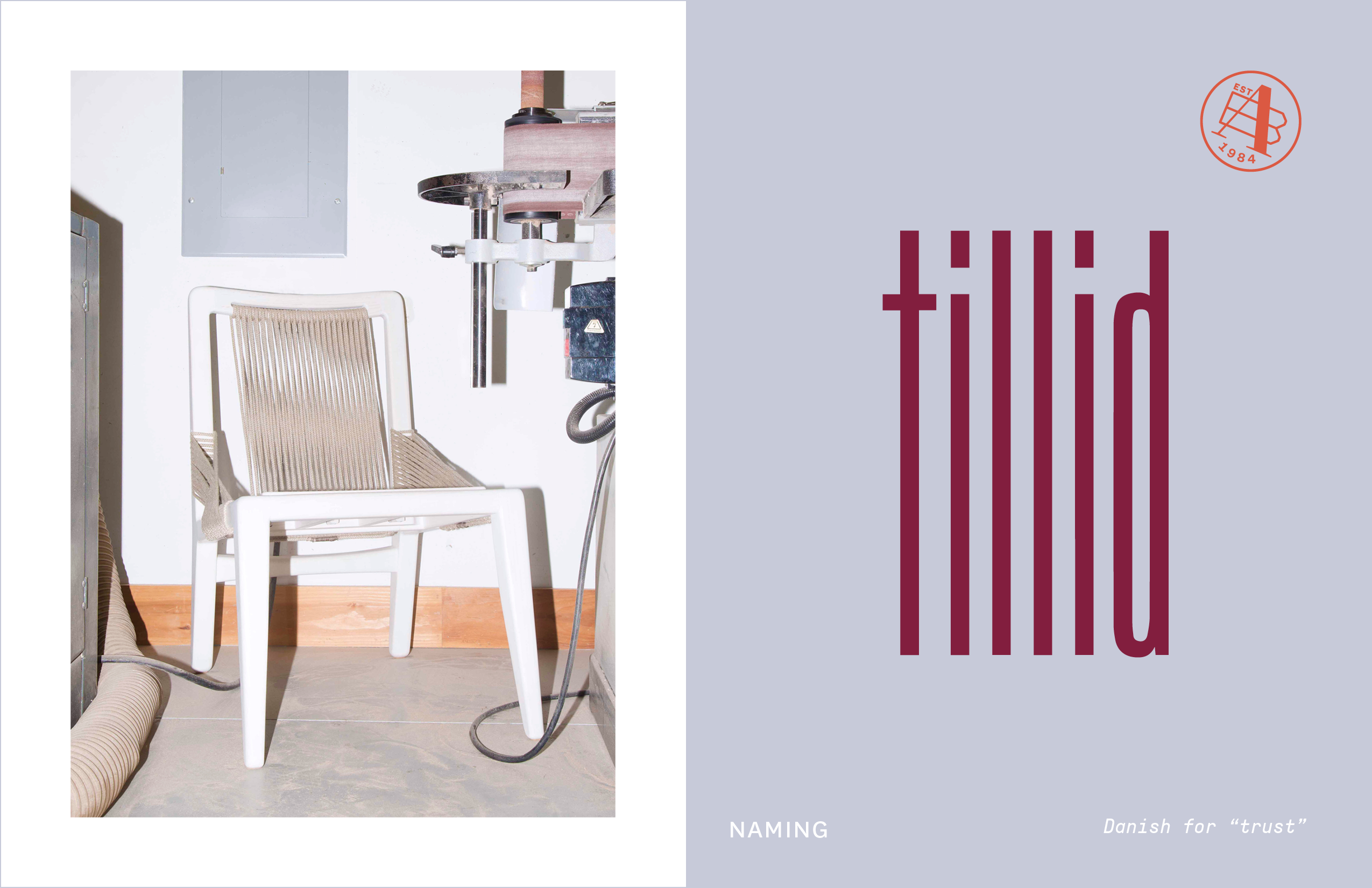
TILLID
Design Chair / Discursive
2011-2018

The Brief
This project began in Hank Richardson's Design History class at Portfolio Center. The mission was to identify and
distill a deeply personal or life-defining story into a single credo, then translate that story into a physical object: the chair. The second challenge was to then consider what it is about a chair that makes it a chair, and how treating each of those defining characteristics could progress that narrative forward.
This project began in Hank Richardson's Design History class at Portfolio Center. The mission was to identify and distill a deeply personal or life-defining story into a single credo, then translate that story into a physical object: the chair. The second challenge was to then consider what it is about a chair that makes it a chair, and how treating each of those defining characteristics could progress that narrative forward.
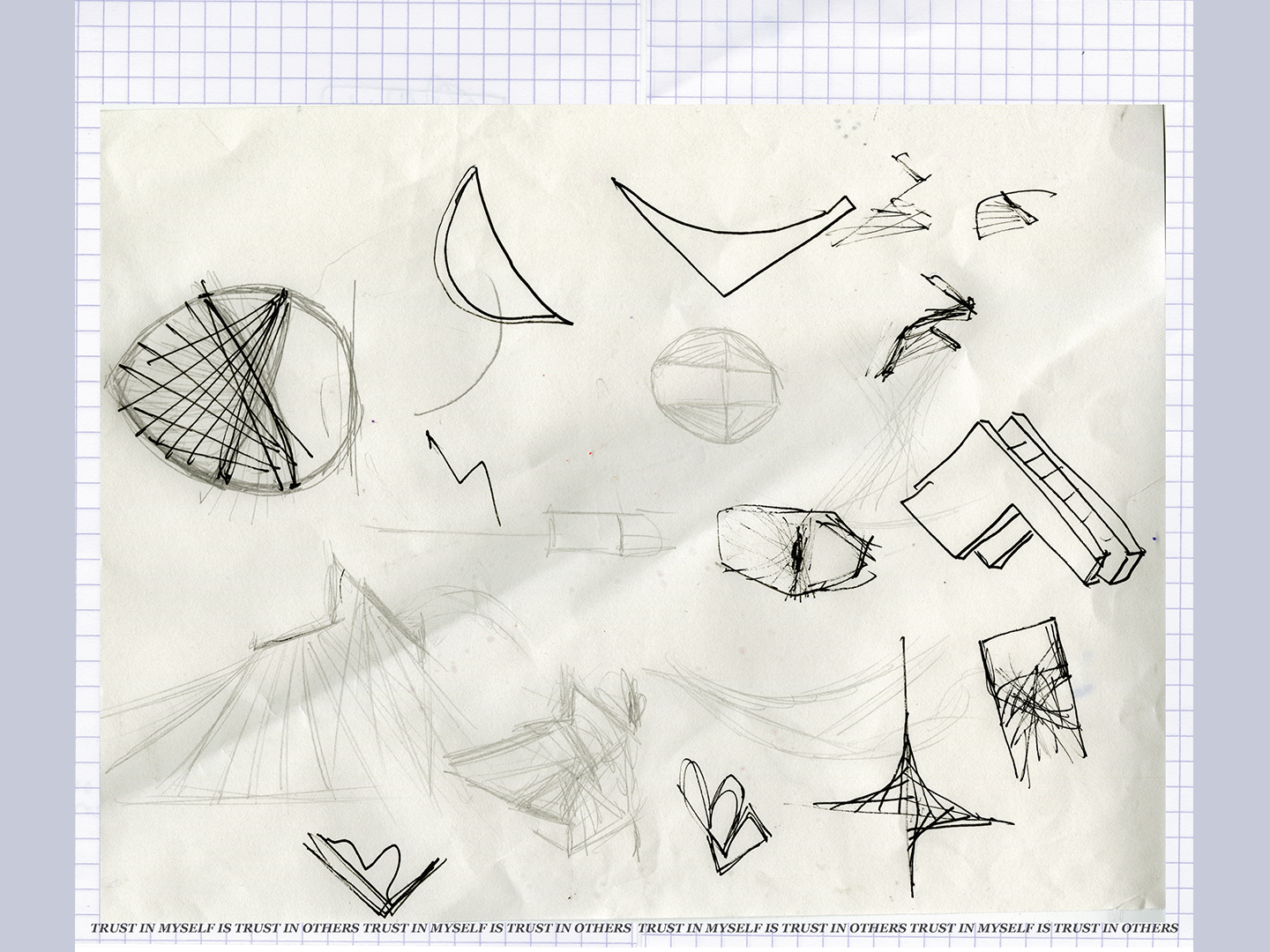

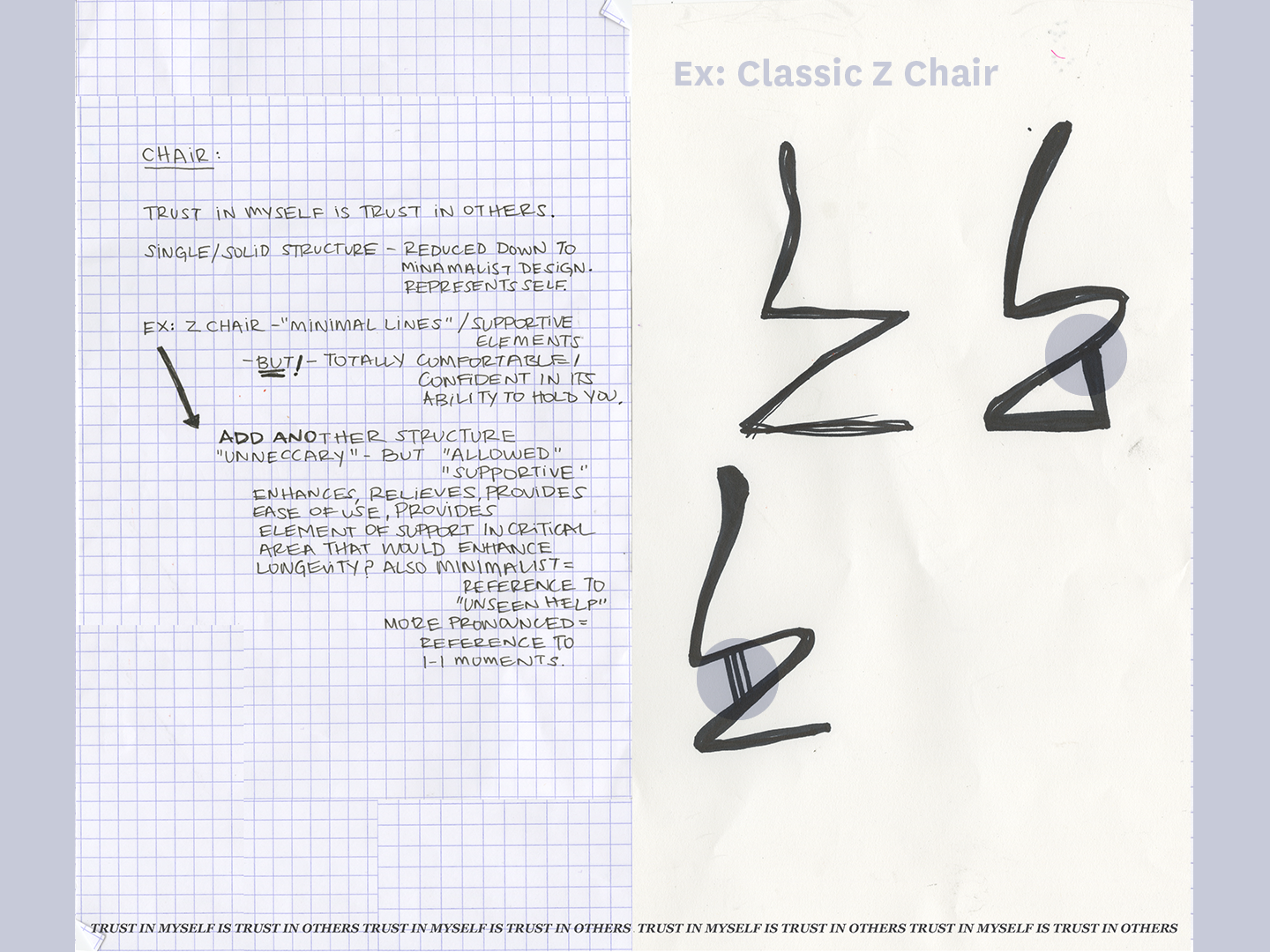

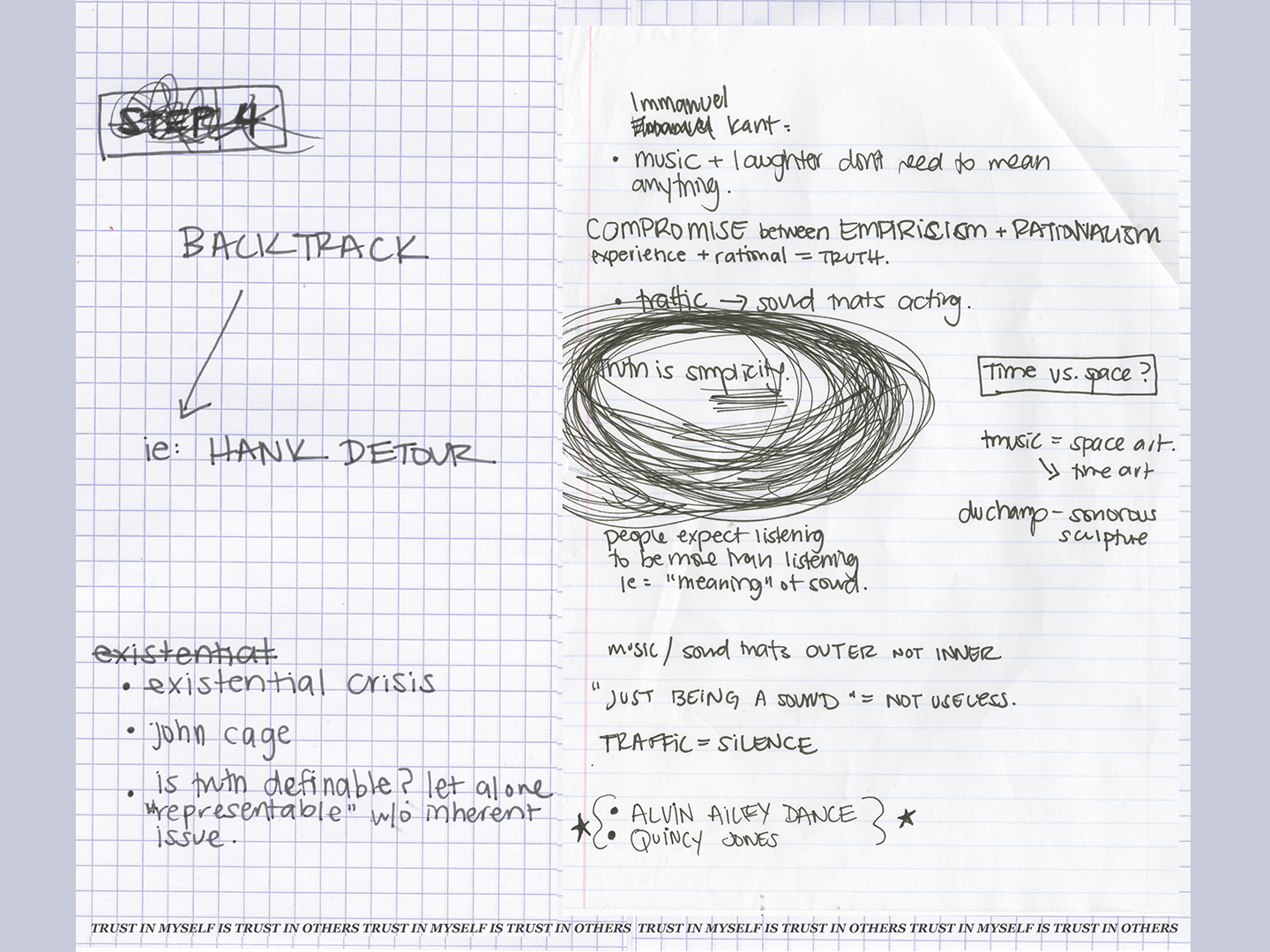
The Story
The timing of this project coincided with my father's declining health and eventual death, after his nearly 30-year battle with Multiple Sclerosis. For me, this project and the idea of trust and relationships were not merely concepts, but had represented my present. In some ways, taking this project on helped intiate processing what was going on while it was happening. In other ways, it forced me to engage with the difficult emotions I would have otherwise liked to avoid in the presence of peers and classmates, and break the thin veil between academic life and personal. I took this task seriously; and attempted the impossible: capturing what was a very visceral and
uncomfortable reality.
The timing of this project coincided with my father's declining health and eventual death, after his nearly 30-year battle with Multiple Sclerosis. For me, this project and the idea
of trust and relationships were not merely concepts, but had represented my present.
In some ways, taking this project on helped intiate processing what was going on while it was happening. In other ways, it forced me to engage with the difficult emotions I would have otherwise liked to avoid in the presence of peers and classmates, and break the thin veil between academic life and personal. I took this task seriously; and attempted the impossible: capturing what was a very visceral and uncomfortable reality.
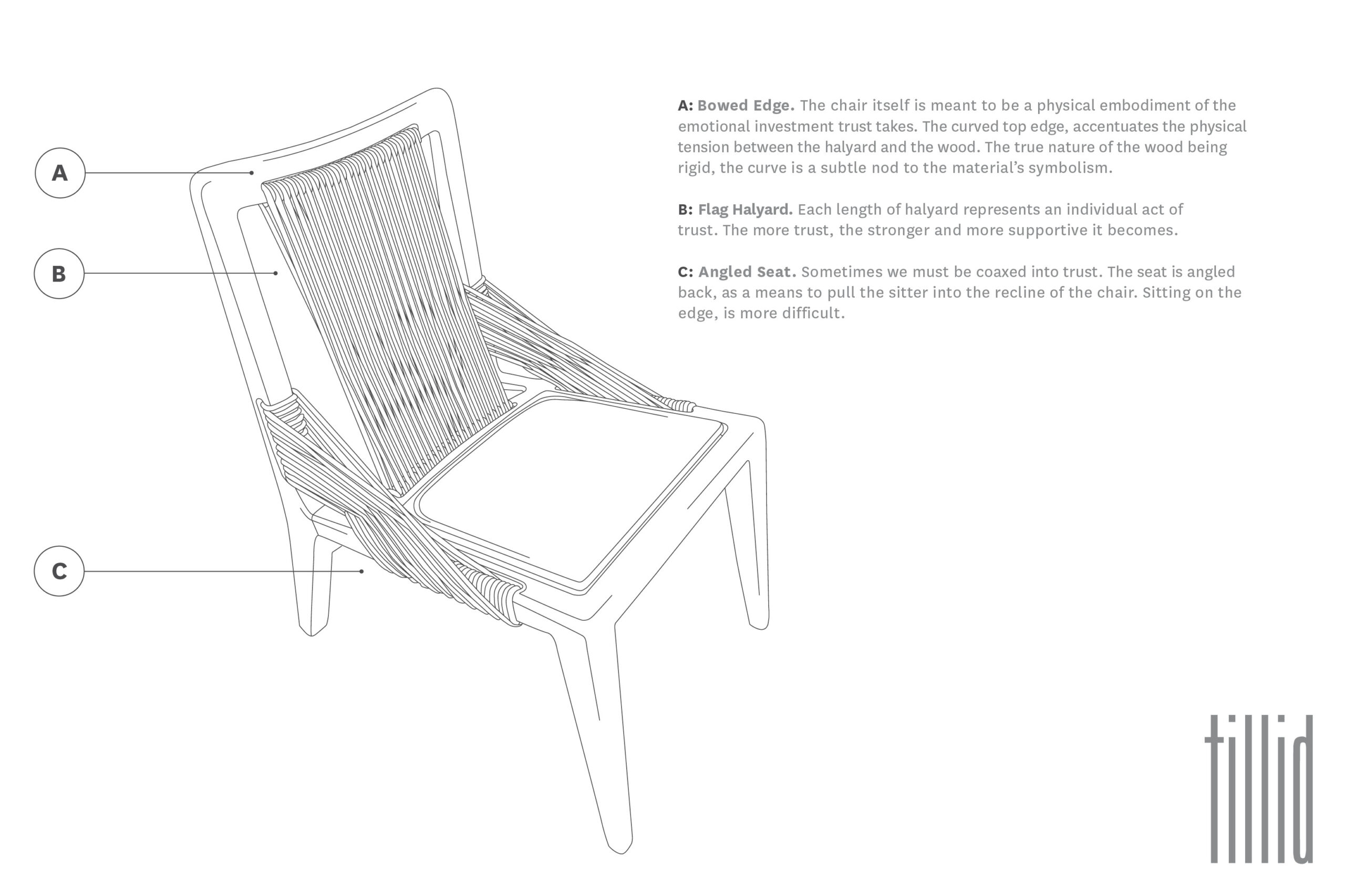
The Process
A significant amount of my initial designs had an interactive or reactive component. I had explored chairs atop a
flight of stairs, which felt adequately strenuous, however put the sitter at a considerable height—therefore a symbolic pedestal—which was not my aim. I considered the absence of the defining characteristics of a chair as another possibility, but the concept is hopeful at its core—so the function of the chair to serve as a reliable and supportive seat—was integral.
I honed in on what could be a more subtle shift in the body's positioning—in order to play with the liminal space
between comfort and discomfort, tension and strength ( ie: the point at which sitting on the edge of the chair—refusing support—becomes so strenuous, that you are forced to consider leaning back and essentially trusting that the back of the chair has a strong enough network of fiber to receive and support you comfortably ). Ultimately,
this chair is comprised of two materials: the wood and the fiber. The wood gives the chair its frame, but has
a completely open back, and therefore would barely function as a seat—without the addition of the flag halyard backing. In essence, the materials work together to creat the function of the chair; each reliably strong in its
own right, but as a whole, greater than the sum of its parts. The reciprocation of comfort, strength and
reliability, reinforcing trust.
A significant amount of my initial designs
had an interactive or reactive component. I had explored chairs atop a flight of stairs, which felt adequately strenuous, however put the sitter at a considerable height—therefore a symbolic pedestal—which was not my aim.
I considered the absence of the defining characteristics of a chair as another possibility,
but the concept is hopeful at its core—so the function of the chair to serve as a reliable and supportive seat—was integral.
I honed in on what could be a more subtle shift in the body's positioning—in order to play with the liminal space between comfort and discomfort, tension and strength ( ie: the point at which sitting on the edge of the chair—refusing support—becomes so strenuous, that you are forced to consider leaning back and essentially trusting that the back of the chair has a strong enough network of fiber to receive and support you comfortably ). Ultimately, this chair is comprised of two materials: the wood and the fiber. The wood gives the chair its frame, but has a completely open back, and therefore would barely function as a seat—without the addition of the flag halyard backing. In essence, the materials work together to creat the function of the chair; each reliably strong in its own right, but as a whole, greater than the sum of its parts. The reciprocation of comfort, strength and reliability, reinforcing trust.

The Result
I was able to source a specialized fiber from a Danish manufacturer, with reputable qualities of strength (without
slacking over time) and comfort (it featured a natural, woven-layer around the outside creating a softer feel). And after consulting with a few specialists, I found a wonderful artist in M.C. Stone who was able put her knowledge, time, and craftsmanship towards producting the final, full-scale chair. Thankful for both his skills and friendship, road-warrior Colby, joined for both trips to coastal Maine; dropping off materials, and then to collect the chair—photographing the experience, now documented here, along the way.
The unassuming quality of a chair—an object with which we are all familiar and interact with regularly—relays the
sincerity of the message. It serves as a reminder that connection and relationships are important. That the physical presence of each other in our lives is important. That the weight of what might seem to be imagined, or emotional burdens can take a physical toll on the body—and conversely: reaching out, reconnecting, and performing acts of trust within ourselves and with others offsets that literal and figurative weight. While at times difficult or uncomfortable, acts of trust are in fact a necessary, fulfilling, and valuable pursuit.
I was able to source a specialized fiber from a Danish manufacturer, with reputable qualities
of strength (without slacking over time) and comfort (it featured a natural, woven-layer around the outside creating a softer feel). And after consulting with a few specialists, I found a wonderful artist in M.C. Stone who was able put her knowledge, time, and craftsmanship towards producting the final, full-scale chair. Thankful for both his skills and friendship, road-warrior Colby, joined for both trips to coastal Maine; dropping off materials, and then to collect the chair—photographing the experience, now documented here, along the way.
The unassuming quality of a chair—an object with which we are all familiar and interact with regularly—relays the sincerity of the message.
It serves as a reminder that connection and relationships are important. That the physical presence of each other in our lives is important. That the weight of what might seem to be imagined, or emotional burdens can take a physical toll on the body—and conversely: reaching out, reconnecting, and performing acts of trust within ourselves and with others offsets that literal and figurative weight. While at times difficult or uncomfortable, acts of trust are in
fact a necessary, fulfilling, and valuable pursuit.
Awards
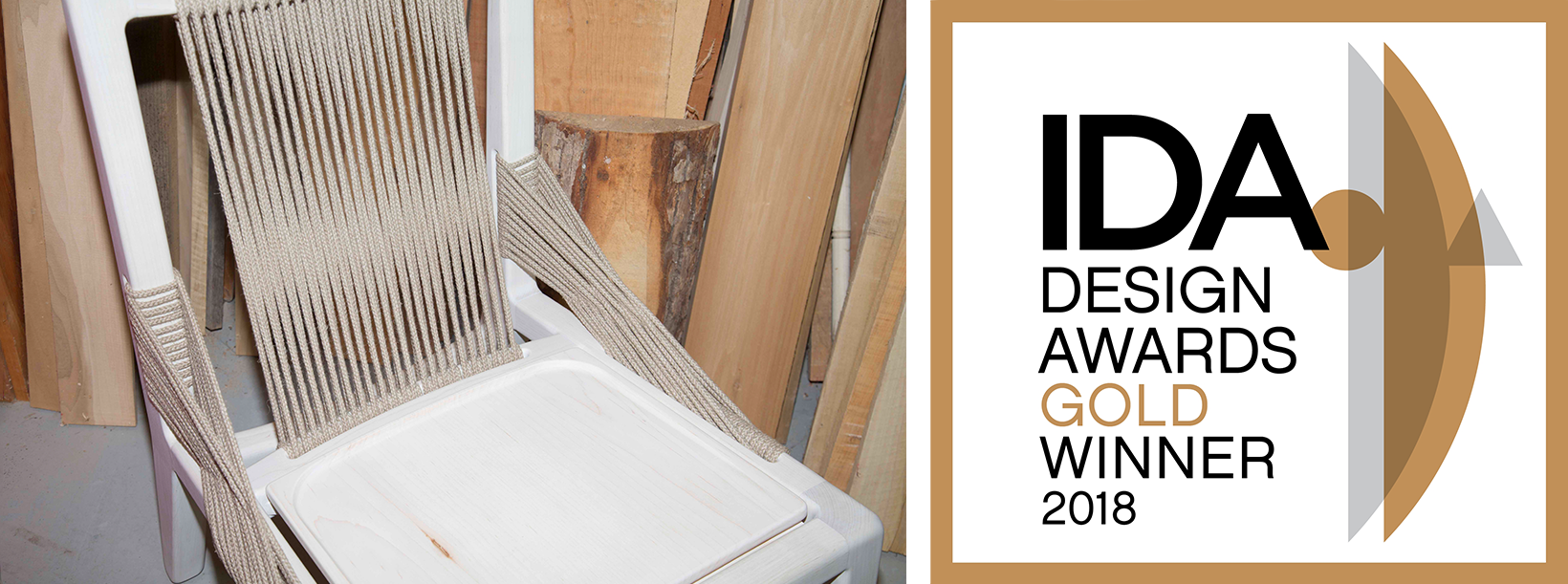
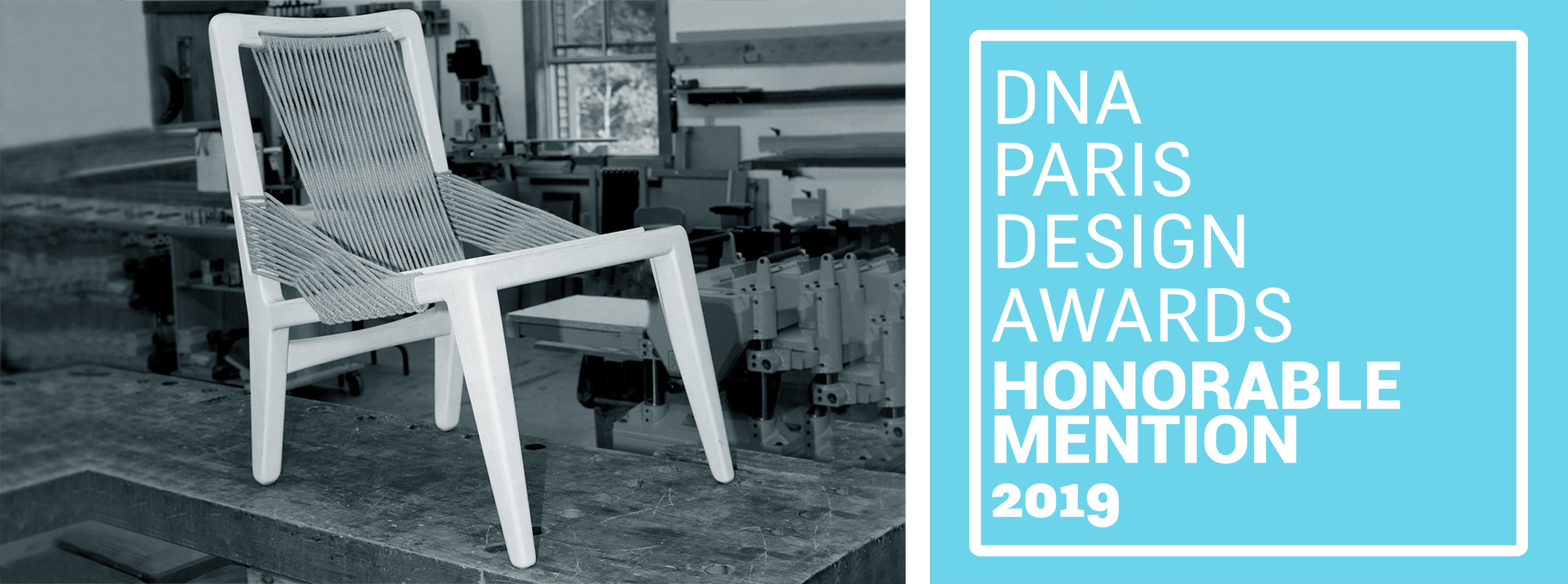
CREDITS:
Photography: Colby Blount
Fabrication: Micaela Crie Stone
CREDITS:
Photography: Colby Blount
Fabrication: Micaela Crie Stone

LET'S STAY CONNECTED




